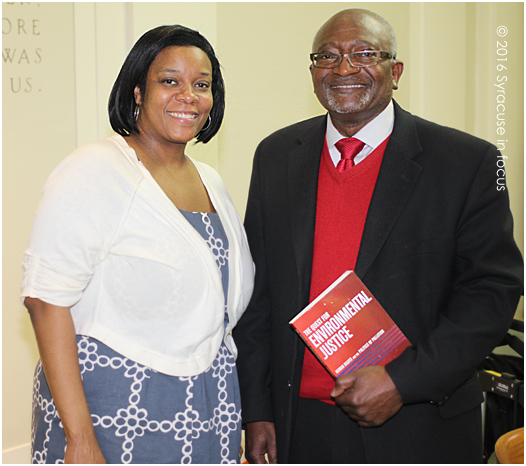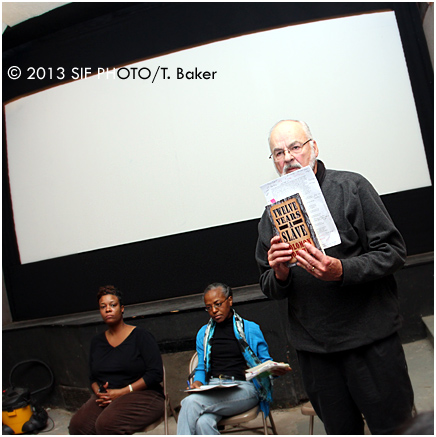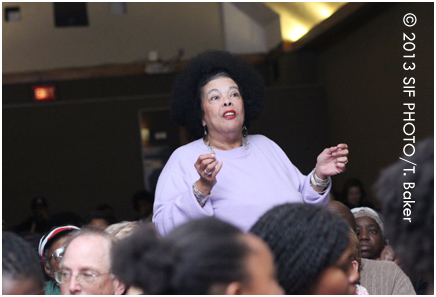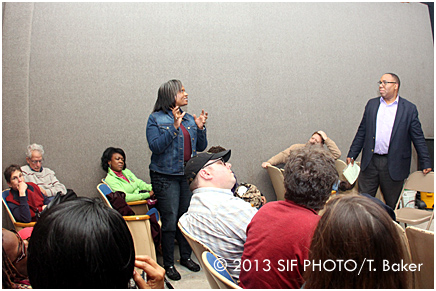
Dr. K. Animashaun Ducre (left), a professor at SU, introduced environmental justice advocate Robert Bullard, Ph.D. at a recent John L. Johnson lecture.
The first rule of environmental justice, according to Dr. Robert Bullard (considered the father of the movement), is that people must speak for themselves and those who are most impacted must be inside the room.
He was one of the organizers of the First National People of Color Environmental Leadership Summit in 1991.
Bullard’s lecture, which was sponsored by the Department of African American Studies and given about 1 week before Earth Day, attempted to connect the dots of pollution between Flint, MI and historical examples in Warren County NC, Whispering Pines (Houston, Tx) and Moosville, LA.
His detailed analysis showed how we often talk “green,” but still act “dirty” when it comes to environmental justice in certain locales.


